- There must be moral certainty, or at least great probability, that something miraculous has occurred that cannot be explained by natural causes or deliberate fakery.
- The person or persons who claim to have had the private revelation must be mentally sound, honest, sincere, of upright conduct, and obedient to ecclesiastical authority.
- The content of the revelation or message must be theologically acceptable, morally sound, and free of error.
- The apparition must yield positive and continuing spiritual assets, for example, prayer, conversion, and an increase in charity.
- The Marian Apparition of Our Lady of Guadalupe
- The Marian Apparition of Our Lady of Lourdes
- The Marian Apparition of Our Lady of Fatima.
The Marian Apparition of our Lady of Guadalupe
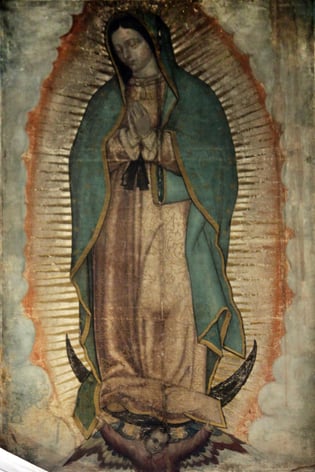 Basilica of Our Lady of Guadalupe / Public domain, via Wikimedia Commons
Basilica of Our Lady of Guadalupe / Public domain, via Wikimedia Commons
On December 9, 1531, the Blessed Virgin Mary appeared to a native Aztec, Juan Diego. She asked him to go to his bishop, Juan de Zumarraga, and ask him to build a church on Tepeyac Hill. After telling Bishop Zumarraga, Zumarraga did not believe him, but the Blessed Virgin appeared to Diego that very same day and, yet again, asked him to return to his Bishop with the request.
The Miracle of Juan Diego's Tilma
Upon asking the Bishop again, Bishop Zumarraga still had hesitations and asked Diego to return with a sign. Sadly, before Diego could return to the hill, Diego’s uncle fell very ill. On December 12th, the Blessed Virgin appeared to him in the street, promising that if he returned to the hill, he would receive a sign and his uncle would be completely healed. Following her instructions, Diego returned to the hill, where he found Castilian roses growing (not native to Mexico). Diego gathered the roses, put them in his tilma, and returned to Bishop Zumarraga. When he opened his cloak and the roses fell to the ground, the picture of the Lady of Guadalupe appeared on the tilma. The evidence of the roses and image were enough to convince the bishop to build the first church atop Tepeyac Hill.
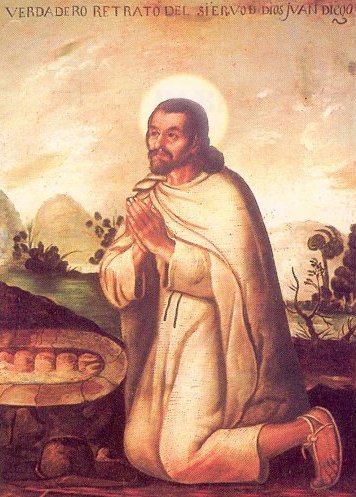 Painting of Juan Diego by Miguel Cabrera / Public domain via Wikimedia Commons
Painting of Juan Diego by Miguel Cabrera / Public domain via Wikimedia Commons
Doubts About the Validity of the Our Lady of Guadalupe Story
There is speculation about the veracity of this Marian apparition because there are no written accounts in Bishop Zumarraga’s writings nor an ecclesiastical report about the image. However, in 1995, Jesuit historian Xavier Escalada published a four-volume encyclopedia on the image and history of Our Lady of Guadalupe. He reports and analyses a hitherto unknown sheet of parchment dated 1548 called “Codex Escalada.” The authentication of the signatures, the parchment itself, its illustrations, its language, and its style all validate the existence and vision of Juan Diego.
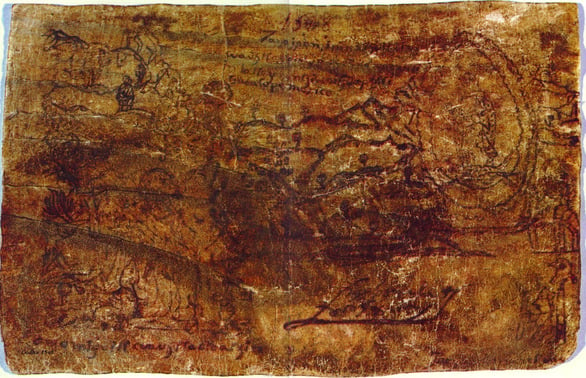
Codice1548 / via Wikimedia Commons
Scientific Validity of the Image of Our Lady of Guadalupe
The image of Our Lady of Guadalupe itself has many extraordinary attributes that border on the miraculous and could probably be verified as miracles. Five attributes were scientifically tested in the 20th and 21st centuries:
- Most replicas of tilmas only last approximately fifteen years before decomposition begins, yet, for almost 500 years, the tilma has maintained its chemical and structural integrity. Even more amazing is the fact that the tilma was on display without protective measures for its first 115 years and was subjected to soot, candle wax, incense, and touching throughout its history. Currently, there is no scientific evidence as to how the tilma has kept its integrity.
- While there have been painted additions to the tilma (e.g., the moon underneath the Virgin’s feet, the angel holding the cloth, and the rays coming from the image), the original image seems to have been painted in a single step as there are no sketches underneath, corrections, or even brush strokes.
- According to Nobel Prize winning biochemist Richard Kuhn, who analyzed a sample of the fabric, found the pigments used were from no known natural source, whether animal, mineral, or vegetable. Given that there were no synthetic pigments in 1531, this enigma remains inexplicable.
- Dr. Philip Serna Callahan noted that the original image on the tilma had not cracked, flaked, or decayed over 500 years, while the paint and gold leaf had flaked or deteriorated considerably. This phenomenon has not yet been scientifically explained.
- The eyes of the Virgin have three remarkable qualities that could not have been achieved with the technology of 1531 and would not even be able to be achieved through today’s technological advancements:
- Engineer Jose’ Aste Tonsmann has amplified an image of the pupils of the Blessed Virgin by 2,500 times and can identify not only what appears to be the image of Bishop Zumarraga but also several other witnesses of the miracle reflected within them.
- The images in the pupils also manifest the triple reflection called the Samson-Purkinje effect—which was completely unknown at the time of the image’s formation.
- The image in the eyes of the Virgin follows the curvature of the cornea precisely in the way it occurs in a normal human eye.
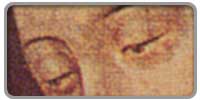 Unknown author, CC BY-SA 4.0 via Wikimedia Commons
Unknown author, CC BY-SA 4.0 via Wikimedia Commons
A Remarkable Source of Conversion
Given the extraordinary attributes of the tilma, it is reasonable and responsible to believe that its origin is also extraordinary—dare say, supernatural. Beyond the seemingly miraculous origin of the tilma, there have also been many miracles associated with the tilma. Some miracles are associated with healing, while one miracle is the tilma’s survival from a bombing by a Mexican secularist in 1921. The devotion to Our Lady of Guadalupe, portrayed on the remarkable tilma in the cathedral atop Tepeyac Hill, has been a most remarkable source of conversion to Catholicism throughout Mexico.
The Marian Apparition of Our Lady of Lourdes
The most well-known appearance of the Blessed Virgin Mary was to Bernadette Soubirous at the Grotto of Lourdes in 1858. The popularity of the miracle is due to not only the apparition but also the thousands of miraculous healings through the water of the Grotto.
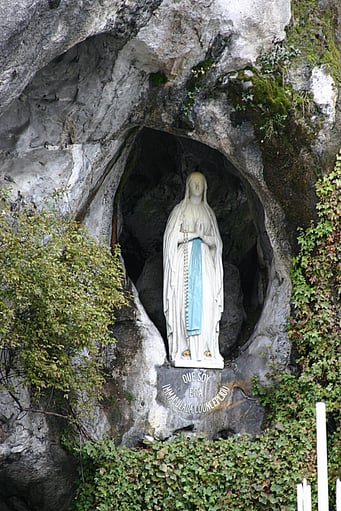 Our Lady of Lourdes–Grotto of Lourdes / © José Luiz Bernardes Ribeiro via Wikimedia Commons
Our Lady of Lourdes–Grotto of Lourdes / © José Luiz Bernardes Ribeiro via Wikimedia Commons
On February 11, 1858, just outside of Lourdes, France, Bernadette Soubirous (a 14-year-old girl without much formal education), her sister Toinette, and a friend Jeanne Abadie were searching for kindling and bones in a cave. When a lady, small in stature, dressed in white with a blue sash around her waist and a gold rosary appeared, Bernadette was the only one to see her. While her parents did not believe her tale, Bernadette would return to the cave where the lady would appear to her again.
Bernadette Returns to the Cave
On Bernadette’s second journey to the cave, the lady did not shrink at the holy water Bernadette had brought, and Bernadette told her that if she was not of God, she would have to go away. The lady smiled and bowed, and Bernadette went into a kind of ecstasy—sensing her holiness and love. Her ecstasy would last long after the apparition, and when she returned a third time to the Grotto, the lady gave her instructions to return several times throughout the upcoming two weeks. The official Lourdes website lists the major points of the apparitions.
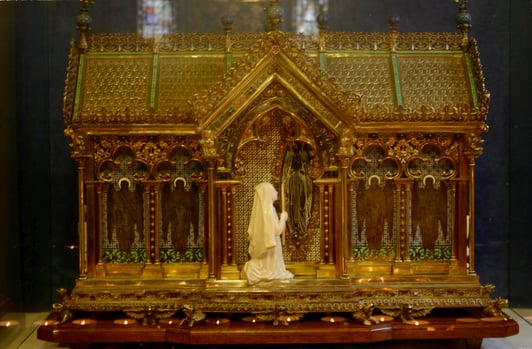 Reliquary of St. Bernadette Soubirous / José Luiz Bernardes Ribeiro, via Wikimedia Commons
Reliquary of St. Bernadette Soubirous / José Luiz Bernardes Ribeiro, via Wikimedia Commons
Scientifically Validated Miracles Associated with Our Lady of Lourdes
As more cures continued to occur at the Grotto, more people were drawn to the cave, resulting in controversy both within the Church and the town. However, by January 18, 1860, an ecclesiastical committee declared the apparition as authentic. Bernadette was canonized as a saint in 1933. Today, almost four million pilgrims per year visit the shrine, and hundreds receive extraordinary and miraculous cures.
Since the time of Bernadette, Lourdes pilgrims have reported over seven thousand miraculous cures (not including miracles that have taken place outside of Lourdes). With so many cases being reported, the Catholic Church set up the Lourdes Medical Bureau in 1883. Pope Pius X formally constituted the Medical Bureau we know today in 1905. The intention of the Bureau is to render a judgment that a particular cure was near-instantaneous, efficacious throughout the remainder of life, and, in all other ways, scientifically inexplicable.
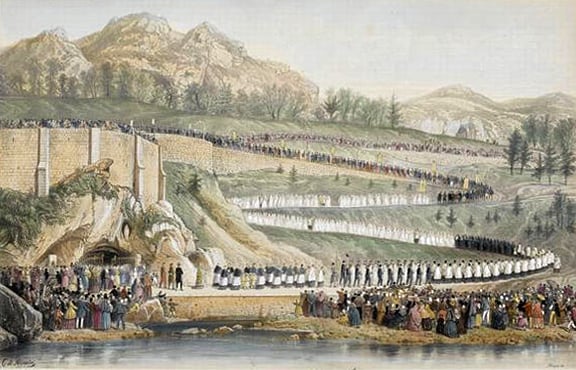 T. de Séguin et François Ferogio en 1864 / Public domain via Wikimedia Commons
T. de Séguin et François Ferogio en 1864 / Public domain via Wikimedia Commons
Currently, only seventy cases have been recognized as “miraculous,” according to the standards of the Bureau. While this does not excuse all other accounts as not miraculous by other standards, it does mean that only seventy cases are scientifically inexplicable.
Three of the most well-known miraculous cures—outside of the seventy recognized miracles—at the Grotto are:
- The case of Marie Bailly (attested to by Nobel Prize-winning physician Alexis Carrell)
- The case of Gabriel Gargam
- The case of John Traynor
The Marian Apparition of Our Lady of Fatima
On May 13, 1917, the Blessed Virgin Mary visited Lucia Santos and her cousins, Jacinta and Francisco Marto, for the first time at the Cova da Iria in Fatima. She told the children to devote themselves to the Holy Trinity and to a daily recitation of the rosary for the First World War to end. During the second apparition, the Blessed Virgin revealed that Jacinta and Francisco would die soon, but Lucia would live longer so she could continue to spread the message of peace from Fatima. Indeed, Jacinta would die in 1918 and Francisco in 1919 during the world flu pandemic. Lucia, however, would live to be 97 after spending most of her life in a discalored Carmelite Monastery.
.jpg?width=308&name=Lu%CC%81cia_Santos_(ChildrensofFatima).jpg) Lúcia Santos / Attributed to Joshua Benoliel via Wikimedia Commons
Lúcia Santos / Attributed to Joshua Benoliel via Wikimedia Commons
The Miracle of the Sun
The children returned to the Grotto on August 19, 1917, and were promised a miracle on October 13, 1917. On October 13, a crowd of about fifty thousand people waited in the rain at the Cova de Iria waiting for the promise of a miracle. Suddenly, the rain began to clear, and Lucia shouted, “Look at the sun!” The sun appeared to be rotating on its own axis, throwing out various colors, and then it appeared to approach the Earth, causing many to believe that the world was ending. It then returned to its normal state. In addition to those present at the Cova de Iria, several other witnesses from the surrounding area (some as far as forty kilometers away) also claimed to see the splendor of the miracle.
 Judah Ruah, photograph for the newspaper O Seculo, published the 1917-09-29 on the newspaper Illustracao Portugueza / CC BY-SA 4.0 via Wikimedia Commons
Judah Ruah, photograph for the newspaper O Seculo, published the 1917-09-29 on the newspaper Illustracao Portugueza / CC BY-SA 4.0 via Wikimedia Commons
Scientific Validity of the Miracle of Fatima
There are many arguments against the claim that the event on October 13, 1917, was miraculous. One claim is that a large cloud of stratospheric dust can explain the event. However, this argument fails to explain the sun spinning on its own axis, approaching the earth, and then returning to its original position.
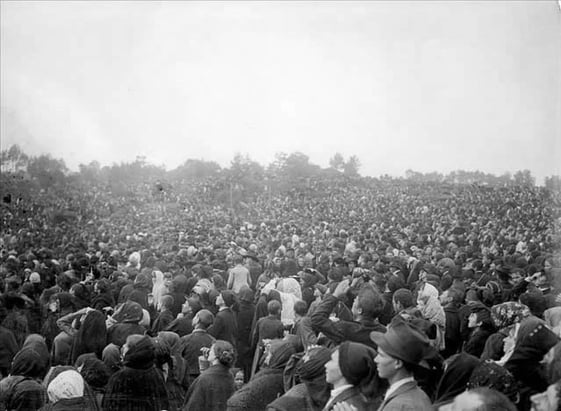 Judah Ruah, photograph for the newspaper O Seculo, published the 1917-09-29 on the newspaper Illustracao Portugueza / Public domain via Wikimedia Commons
Judah Ruah, photograph for the newspaper O Seculo, published the 1917-09-29 on the newspaper Illustracao Portugueza / Public domain via Wikimedia Commons
Additionally, there is an argument for mass hallucination due to the fact that the event was religious and that the witnesses were already expecting a miracle. However, this theory disregards the fact that there were fifty thousand witnesses at the Cova da Iria and that there were witnesses as far as forty kilometers away who could not be under the same “spell” as those at the Cova da Iria were suspected to be. Furthermore, the physical evidence that the wet ground from the rain prior was dried, shows the event was not in the minds of the witnesses.
Combining the circumstances of the accuracy of the children’s prediction, the drying effect of the phenomenon, the incredibly unique nature of the phenomenon, the mass amount of witnesses across all backgrounds, and how far away some witnesses were, it is both reasonable and responsible to believe that there was a supernatural power at the Cova da Iria.
Scientifically Validated Miracles of Marian Apparitions at Lourdes, Guadalupe, and Fatima
The pivotal presence of The Blessed Virgin at Tepeyac Hill, Lourdes, and the Cova da Iria shows just how central she is in the order of salvation by God’s will. Why would God want her to hold such an important role in providence and salvation? Perhaps it is because He seeks a feminine and motherly voice in the manifestation of his care and salvific intention. Mary’s motherly affection toward Bernadette, Juan Diego, and the children at Fatima are a great testament to the dimension of family in God’s providential plan and love.
_-_stained_glass%2c_Coronation_of_the_Virgin_Mary.jpg?width=339&height=453&name=Saint_Joseph_Catholic_Church_(Somerset%2c_Ohio)_-_stained_glass%2c_Coronation_of_the_Virgin_Mary.jpg) Saint Joseph Catholic Church (Somerset, Ohio)—stained glass, Coronation of the Virgin Mary by Nheyob / CC BY-SA 4.0 via Wikimedia Commons
Saint Joseph Catholic Church (Somerset, Ohio)—stained glass, Coronation of the Virgin Mary by Nheyob / CC BY-SA 4.0 via Wikimedia Commons
This motherly dimension is vital for those who are suffering and those who need the kind of encouragement and solace that only a mother can give. This motherly care and solace richly complements the unconditional love of the Prodigal Son’s father (Abba) and the unconditional brotherly love of Jesus Himself.
*Originally published July 28, 2021

